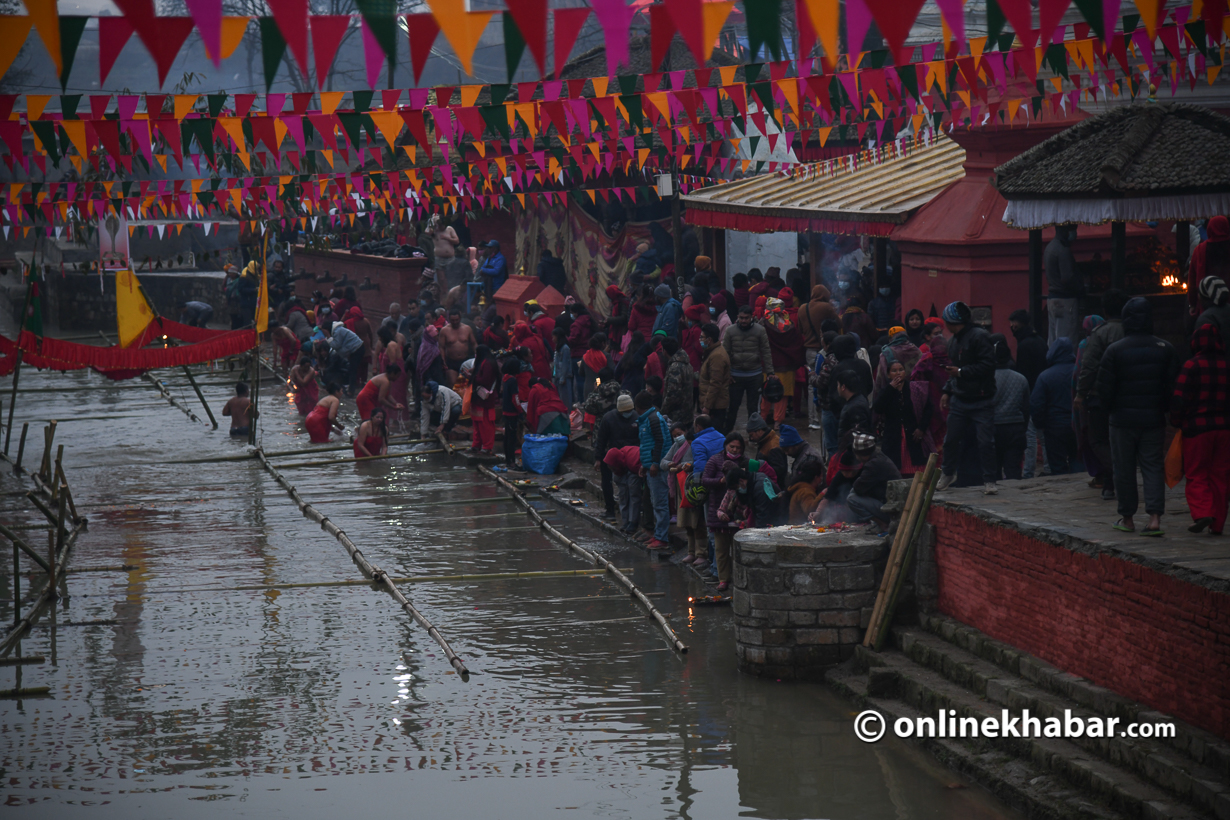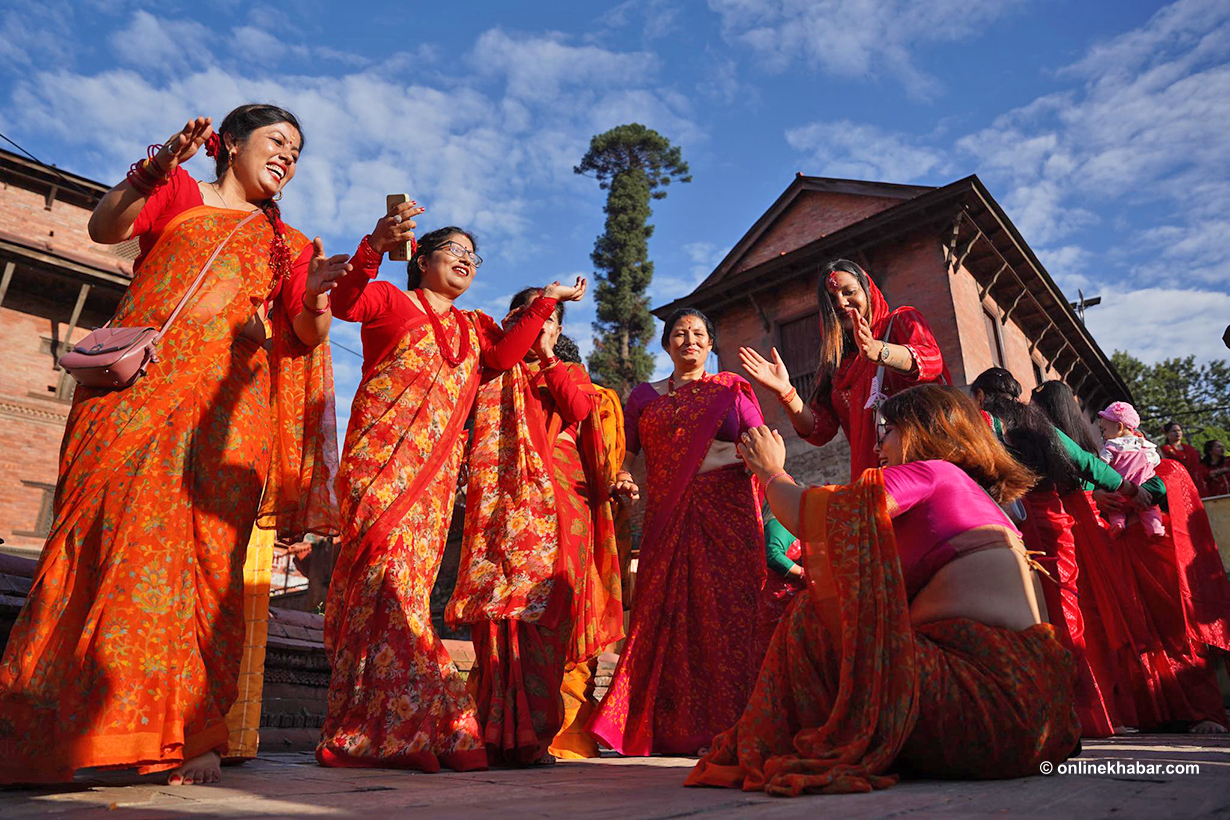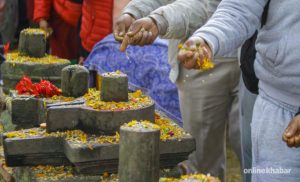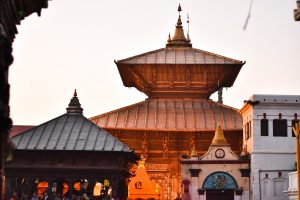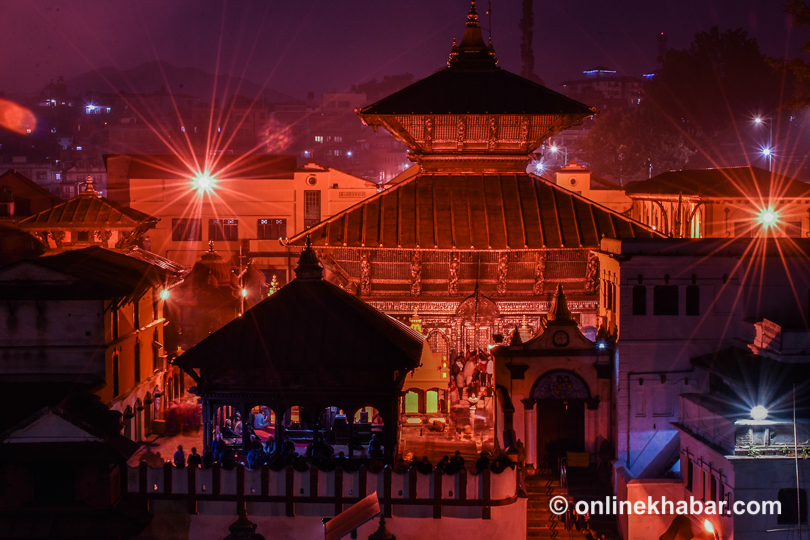
When it comes to the Pashupatinath, many only remember the main temple. While they are not wrong, there is a group of young students who want to make sure that people get to know and learn more about the temple and its intricate details. They are accomplishing this by introducing an ebook on Pashupatinath temple and other temples around its periphery.
The project first commenced with the initiative of Laxman Bista, who was enrolled at Dartmouth College for his undergraduate degree. Every year, Dartmouth provides its students with funds to explore ideas and innovations. With this funding and his deep interest in religion and spirituality, Bista launched the Reinstalling Hope campaign. Later he started working in the project to document and make the e-book incorporating the many shrines that often go unnoticed.
“These smaller, historically significant temples and the artefacts, often overlooked by visitors and devotees, hold a similar level of importance if not fascination. Our aim is to ring their stories forward and introduce the grandeur of Pashupatinath temple area to a wider audience.”
With this clarity in mind, Bista got together the students from the Opportunity Fund and a few other college students, brought them on the same page and assigned different roles based on their experience and expertise. Thanks to the collective effort, they have brought forward and simplified the myths, legends, and historical significance, in their e-book. This sub-project he later named ‘Save the Heritage’ that runs under Reinstalling Hope.
Ebook on Pashupatinath area
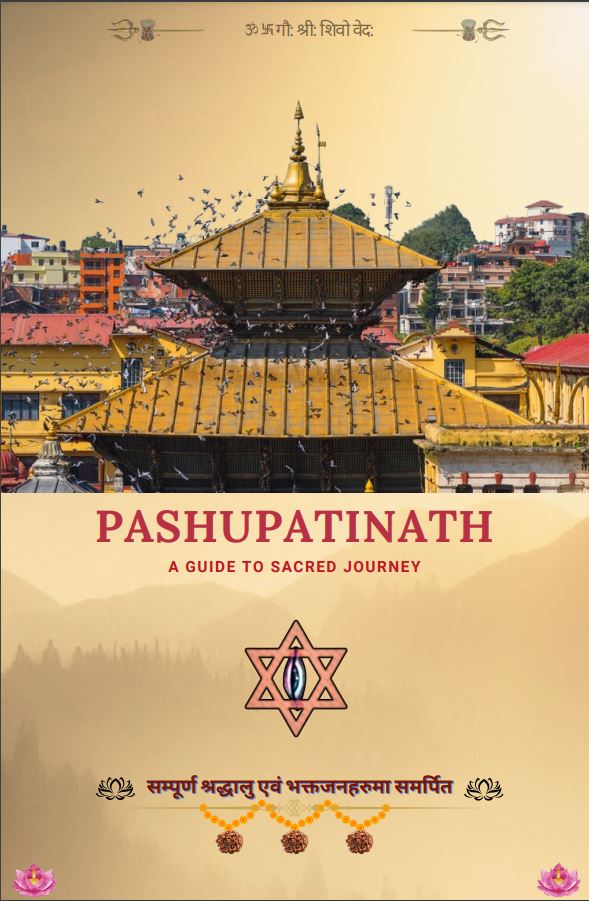
Titled Pashupatinath, A Guide to Sacred Journey, the ebook on Pashupatinath begins by highlighting the landmarks situated outside the gated area of the Pashupatinath temple.
One such significant site is the Bhuvaneshwari temple and its courtyard, which, despite being openly accessible to the public, is often overlooked.
Its importance as a shakti peeth is a key aspect that deserves attention.
The ebook on Pashupatinath is divided into nine parts just like the other aspects of the temple that have been highlighted in the book i.e. nine shakti peeths, nine choks, nine ponds and holy spouts (hiti). The book even gives insight into the area inside the gate–which is only accessible after you take off your shoes–and inside the main temple area–where only Hindus are allowed.
“Photography is permitted in the gated area leading to the main temple and we have taken pictures of everything there and documented it. As for the shrines inside the main temple area, where photography is not allowed, we plotted the shrines and have explained each of them in numerical order.”
There are 37 landmarks plotted inside the main area. The Pashupatinath area extends from Pingalasthan to the Jorpati area, and from Jaya Bageshwori to Mrigasthali. The ebook on Pashupatinath encompasses an extensive coverage of over 500 shrines and landmarks from this entire expanse.
The information presented in this book comes from different sources, with the primary foundation being interactions with the priests who dedicate themselves to the Pashupatinath temple and other temples around the area. Additionally, numerous accounts and information have been drawn from various written records, including books, epics, and inscriptions. These resources encompass a wide range, from local research papers to scholarly works and religious scriptures such as the Mahabharata.
New avenue of learning
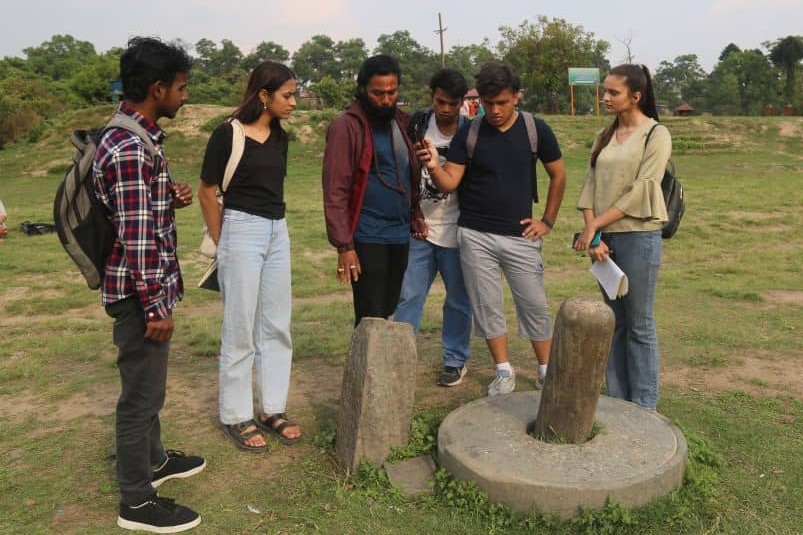
Led by Laxman Bista, the 13 young volunteers all pitched in their ideas and contributed to the book.
“I first got in touch with Jogi Debnath, the mahant of Mrighasthali Gorakhnath Peeth, for guidance in the research process. He then connected us with Swami Kedarman Bhandari, one of the senior Bhandaris of Pashupatinath area, who then guided us throughout our site visits and assisted us in collecting the information we needed,” he says.
The work for the ebook on Pashupatinath started with the intention of making the area more familiar to the people, beyond the geographical and religious barriers that might hinder them from marvelling at the heritage site.
“When going to the temple, we had seen many tourist guides giving out misleading information. Our aim is to involve tourist guides through this book, ensuring that the information disseminated beyond the country’s borders is not only accurate but also consistent in its portrayal,” says Pritesh Thakur, a researcher involved in the project.
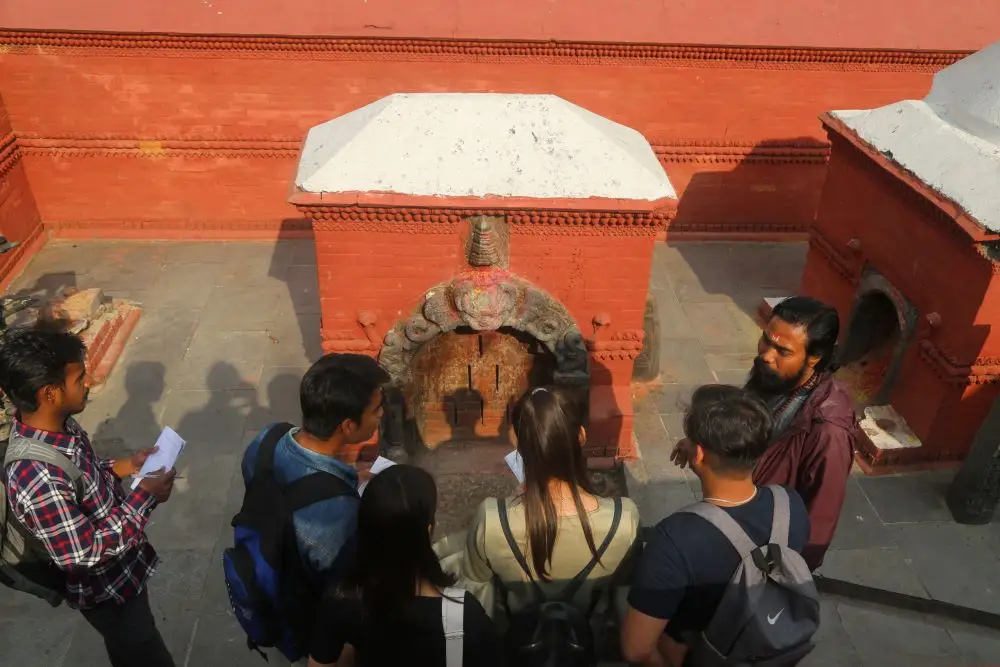
The process of compiling this book proved to be an illuminating experience even for the researchers, who originally set out with the intention of sharing this information with the public.
“While it was always understood that numerous pujas take place within the premises and that there are priests in attendance, our research unveiled a deeper understanding. We discovered that the pujas are conducted in two distinct manners, each overseen by a different category of priests,” says Thakur.
“We also learned that there are two parts of the puja, also mentioned in the book. The priests explained to us how the [Shiva’s] knowledge is divided into two parts–Nigam and Aagam. Where one is of a vedic nature another is tantric. Similarly, there are two priests–Bhatta and Bhandari. Bhatta pujari (priests) are from India and Bhandari are from Nepal,” he adds.
The team also gained a new understanding of the diverse spiritual landscape within the Pashupatinath premises, which encompasses various deities, and shrines like the Bhairav temples and idols. Additionally, the coexistence of Buddhism and Sikhism alongside Hinduism in this significant shrine was a revelation for us.
“Getting in-depth knowledge on the sacred site was a blessing. Many of our team members would joke saying that they have now become an unofficial tour guide to Pashupatinath,” says Bista.
The 13 young aspiring students who were all in the process of pursuing their undergraduate studies away from Nepal, used their free time and started working on the idea of putting together an ebook on Pashupatinath.
Starting from January 2023, the team of volunteers finished preparing the book in just about six months and released it in English on July 3, on the occasion of Guru Purnima.
A month later, they also translated the book into Nepali and uploaded it to their website for free access for all.
Aim to reach more
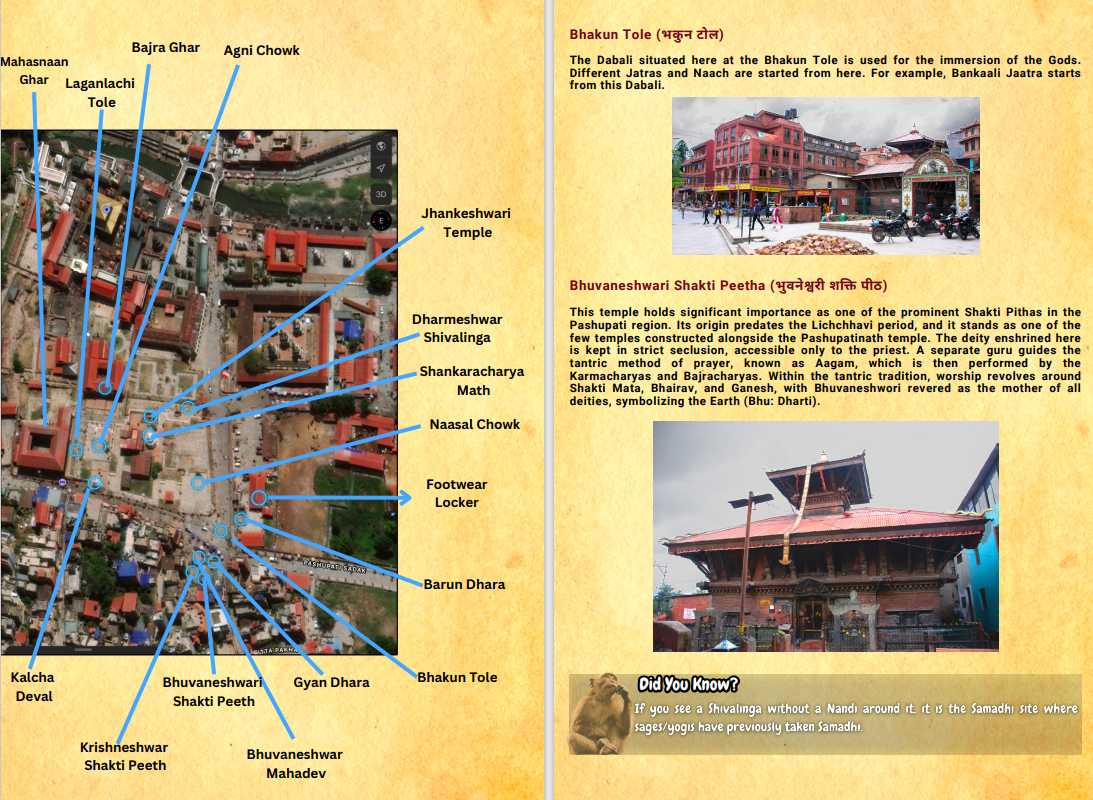
House to 500 shrines within the premise, the Pashupatinath area is one of the most revered UNESCO world heritage sites in Kathmandu Valley. It was enlisted in 1979.
Given that UNESCO has interests in preserving and promoting heritage sites, the group hopes to get the organisation on board and collaborate to get to a wider audience. They are already in talks about the future plan.
“We are in the process of getting the ebook on Pashupatinath authenticated before we move forward. Since the book was our individual effort, we have been told to get it verified to steer clear of any religious or personal biases, as well as prevent conflicting information and misinformation of any kind,” says Thakur.
Once the verification process is complete, which Thakur says might take six months, they will be able to print either brochures, pamphlets and booklets or put up QR codes for the visitors to scan and get more information while they go around the heritage site.
And they hope to get all that done before the Mahashivaratri festival this year.
Meanwhile, they are also working on a new parallel project Save the Heritage campaign under which the team will be exploring more heritage sites and landmarks of social and religious importance and making similar booklets for them.
“Save the Heritage is geared towards the conservation of the objects and sites of heritage in Nepal through exploration, documentation, and communication of the historical and cultural importance of those heritages. This is our long-term vision that we hope to accomplish through active participation of youth and mentorship and guidance of the experts,” says Bista.
“Another array of work we are looking into is jatras of Kathmandu or devghats. But that will be in the months to come,” Thakur adds.
And, in this new venture, Bista will be leading the new and old aspiring students from the Opportunity Fund alumni roster as well as other interested students to be a part of this project and give shape to it.
“The young generation from the Nepali diaspora has less exposure to our heritage compared to the ones within Nepal. If we want to instil cultural values and national spirit in them, we need to support and invest in creating materials and resources like these,” says Bista.






